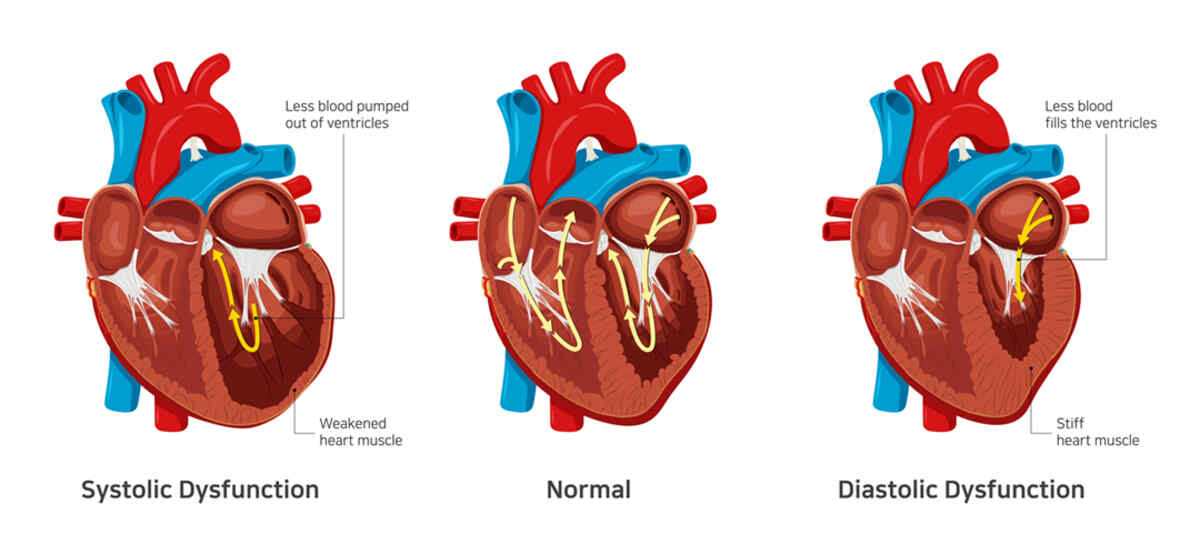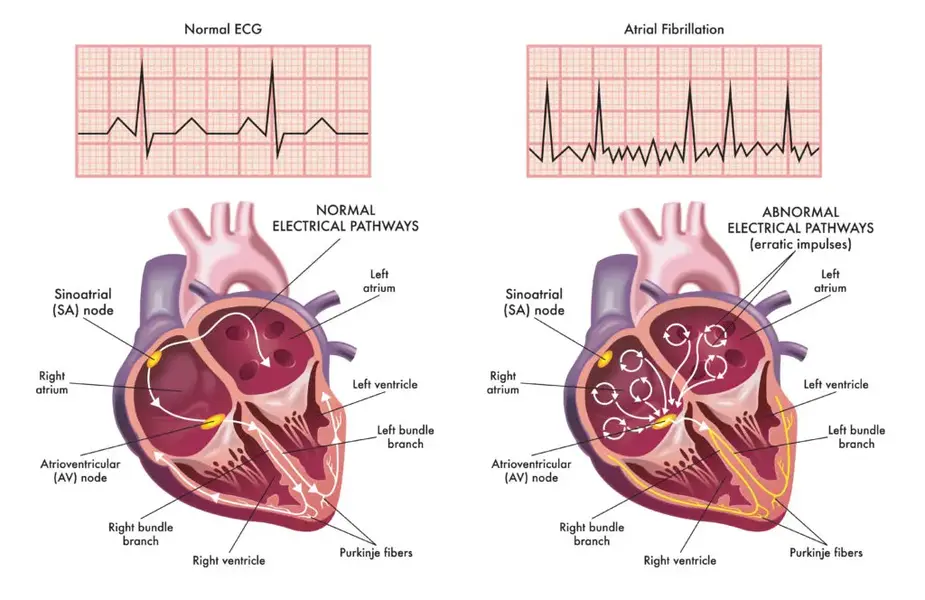In earlier articles, we discussed heart failure symptoms and how doctors diagnose them. However, treatment can differ for each patient, depending on their heart failure type.
Doctors categorize heart failure into two types based on the affected part of the heart's pumping cycle. In this blog, we'll focus on diastolic dysfunction and its symptoms.
What Causes Diastolic Dysfunction?
The diastolic phase is when the heart's lower chambers, called ventricles, relax. During this time, they fill with blood from the upper chambers, known as atria. Diastolic dysfunction happens when the ventricles don't relax properly, which reduces the amount of blood entering the heart.
This condition occurs when the heart muscles become thicker and stiffer than usual. More common in older women with high blood pressure (hypertension) and diabetes. If not treated, it can progress to diastolic heart failure, also called heart failure, with preserved ejection fraction.
What Does Preserved Ejection Fraction Mean?
Ejection fraction measures how much blood the left ventricle pumps out with each heartbeat. In a healthy heart, this number ranges between 55% and 65%. A lower ejection fraction is often a key sign of heart failure.
However, in diastolic dysfunction, many people have an ejection fraction of 50% or higher. This preserved ejection fraction means the left ventricle pumps enough oxygen-rich blood.
The problem is that the heart muscle doesn't relax properly or fill with enough blood. This causes blood to back into the lungs, leading to fluid build-up in the feet and abdomen.
How to Differentiate Systolic from Diastolic Dysfunction?
In systolic dysfunction, the heart muscle is "weak," meaning the heart struggles to pump blood out. In contrast, diastolic dysfunction happens when the heart becomes "stiff," making it unable to accept enough blood.
Both conditions can lead to fluid build-up in different organs of the body. Telling systolic and diastolic dysfunctions apart is hard. They often have similar symptoms. Because of this, diagnosing heart failure based on these symptoms alone can be difficult.
Which Conditions Lead to Diastolic Dysfunction?
Common causes of diastolic dysfunction include:
- Uncontrolled or long-term diabetes
- High blood pressure (hypertension)
- Obesity
- Older age
- Women, especially those with atrial fibrillation
The best way to prevent and treat diastolic dysfunction is by effectively managing these conditions.
Symptoms of Diastolic Dysfunction
The main symptom of diastolic dysfunction is congestion and shortness of breath caused by blood and fluid building up in the lungs. Breathing problems can worsen, especially during physical activity or when lying down.
Other Symptoms of Diastolic Dysfunction
Other signs of diastolic dysfunction include:
- Coughing and wheezing (from lung congestion)
- Loss of appetite and nausea (because of fluid around the liver and stomach)
- Swelling in the feet, legs, and abdomen (from fluid build-up)
If you experience any of these symptoms, seeing a doctor for a proper diagnosis is essential.
Treatment of Diastolic Dysfunction
Treating diastolic dysfunction typically involves medications like diuretics (water pills) and making lifestyle changes. In severe cases, a patient may need a left ventricular assist device or a heart transplant.
Is Diastolic Dysfunction Serious?
Over time, diastolic dysfunction can lead to diastolic heart failure, which increases the risk of hospitalization and death. Monitoring your symptoms and contacting a doctor if you notice anything unusual is essential.
Dr. Deep Chandh Raja is a well-known cardiologist in Chennai who specializes in cardiac electrophysiology. With decades of experience, he treats patients with various heart conditions. If you or someone you know has symptoms like shortness of breath, swollen feet, or loss of appetite, please get in touch with Dr. Deep Chandh Raja. You can discuss treatment options with him.




.jpg)